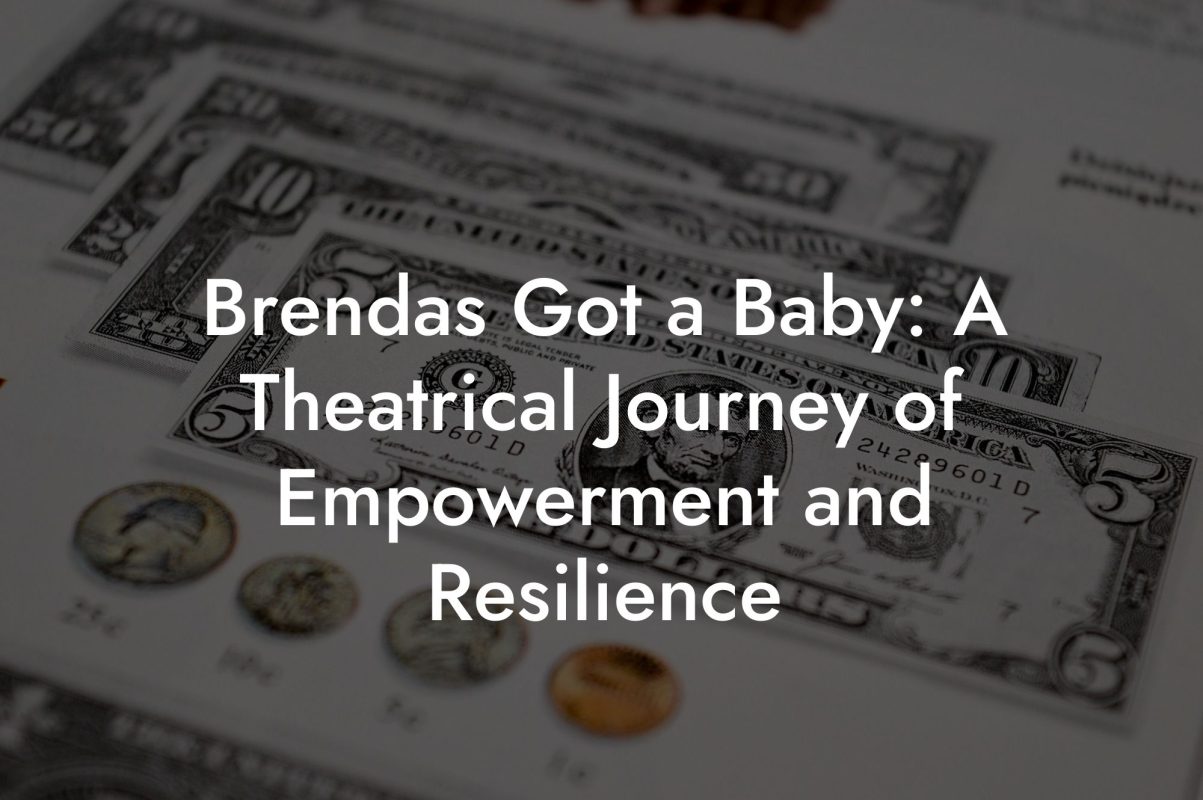Picture this: you’re scrolling through TikTok during a mid-afternoon break when suddenly it hits you—what if you could save for your education and your future all at once while flexing some serious financial savvy? Welcome to the dazzling world of Education IRA Accounts in 2025, where your money grows tax-advantaged, and you can tap into funds for school expenses without the drama. Whether you’re a millennial juggling student loans or a Gen Z dreamer mapping out a future free from financial FOMO, this guide is here to break down the best Education IRA accounts with humor, clarity, and a touch of irreverence.
Best Education IRA Accounts in 2025 Table of Contents
What Are Education IRA Accounts?
The Rise of Education IRA Accounts: Why Millennials and Gen Z Should Care
How Do Education IRA Accounts Work?
The Best Education IRA Accounts in 2025: A Comprehensive Comparison
The Tax Advantages and Flexibility of Education IRA Accounts
Maximizing Growth: Investment Strategies for Your Education IRA
The Role of Fintech: Tools and Tips for Seamless Management
Overcoming Challenges and Avoiding Common Pitfalls
Success Stories: Real-Life Transformations with Education IRA Accounts
Strategies for a Future-Proof Education and Retirement Plan
Resources and Community Support: Your Next Steps
What Are Education IRA Accounts?
In a nutshell, Education IRA Accounts are a twist on the traditional Individual Retirement Account (IRA), engineered for those who want their nest egg to serve a dual purpose: preparing for retirement while also being available to help fund education expenses. Yes, you heard that right—think of it as the Swiss Army knife of savings vehicles. While traditional IRAs are designed to cradle your retirement dreams, Education IRA accounts have evolved to offer flexibility for educational costs, making them a hot ticket item in 2025.
Unlike your typical savings account that might earn a measly interest rate, these accounts come with various tax advantages. Some accounts offer tax-deferred growth so that your money can work whiz-kid magic over time, while others allow for tax-free withdrawals if the funds are used for qualified education expenses. The idea is to give you the best of both worlds: a robust retirement plan that doubles as an educational fund.
In today’s ever-shifting financial landscape, where student debt loops around like a never-ending meme, Education IRA accounts are emerging as a favored option for generations who want more control over their financial destiny. They empower you, the savvy saver, to invest smartly and plan for both your academic dreams and your golden years—all in one neat financial package.
The Rise of Education IRA Accounts: Why Millennials and Gen Z Should Care
Let’s get real. The days of pinching pennies in a dusty piggy bank are long gone. In our digital era, financial literacy is the new cool, and Education IRA accounts are stepping into the spotlight as a game-changer. Gone are the times when saving for education was synonymous with cramped budgets and endless sacrifices. With these accounts, you can harness the power of compound interest and tax benefits, potentially easing the burden of tuition fees and other educational expenses.
For millennials and Gen Z, the challenges are unique. Student debt looms large, and the cost of higher education balloons like your social media feed on a good day. However, with Education IRA accounts, you can strategize how to channel your funds into both your earning years and your educational pursuits. It’s not just about saving for college—it’s about building a flexible, financially secure future that adapts as your personal and professional needs evolve.
Imagine a world where your financial future is as customizable as your Spotify playlist. Whether you’re climbing the corporate ladder or launching a startup from your bedroom, Education IRA accounts provide a flexible solution that aligns with your aspirations and risk tolerance. They’re designed to move with you, offering options that can adapt as you switch career paths, pursue further studies, or even take a gap year to explore the globe.
How Do Education IRA Accounts Work?
Education IRA accounts operate similarly to traditional IRAs, but with one giant bonus: the ability to use funds for qualified education expenses without incurring penalties. At their core, these accounts let you contribute a certain amount each year, and over time, your investments grow through the magic of compound interest. The kicker? Depending on whether you opt for a traditional or Roth version, you might get tax deductions upfront or enjoy tax-free withdrawals later.
Here’s a breakdown of the core components:
- Contributions: You contribute money from earned income. For many, these contributions are made with pre-tax dollars (in traditional IRAs) or after-tax dollars (in Roth IRAs). The annual contribution limits are set by the IRS and can change, so staying updated on the latest caps is key.
- Tax Advantages: Traditional Education IRA accounts can offer tax-deferred growth, meaning you don’t pay taxes on earnings until you withdraw the funds. With Roth options, qualified education withdrawals can be tax-free, which is a major win when you’re tackling hefty college bills.
- Qualified Education Expenses: These typically include tuition, fees, books, and other necessary supplies. Some plans might also cover room and board if you’re enrolled full-time. It’s a good idea to check the specific guidelines to make sure you’re eligible for penalty-free withdrawals.
- Flexibility: Education IRA accounts give you the power to decide when and how to use your funds. Need money for a semester abroad or a last-minute textbook purchase? You’ve got options without the usual tax bite associated with early withdrawals.
Think of Education IRA accounts as financial multi-taskers that help you set aside cash for two critical life events—education and retirement. They require careful planning, yes, but they’re a tremendous asset if used correctly.
The Best Education IRA Accounts in 2025: A Comprehensive Comparison
Choosing the right Education IRA account can feel like trying to pick the best flavor of ice cream on a scorching summer day—exciting yet overwhelming. To help you navigate this foodie frenzy of financial products, we’ve compiled a rundown of the top Education IRA accounts for 2025, spotlighting their unique features, benefits, and any potential quirks.
1. FutureFund Roth Education IRA
If you’re drawn to the allure of tax-free withdrawals, FutureFund’s Roth Education IRA might just be your financial soulmate. With low fees, a diverse range of investment options, and a user-friendly digital interface, FutureFund is perfect for those who want to watch their savings grow uninterrupted. Plus, it comes with nifty educational resources that break down complex investment strategies into bite-sized, relatable content.
Key Features:
- Tax-free growth and withdrawals for qualified education expenses
- Low expense ratios and no hidden fees
- Mobile app with real-time tracking and educational content
- Flexible contribution options with bonus incentives for early savers
2. EduGrow Traditional IRA
For those who appreciate the benefits of tax-deferred growth, EduGrow Traditional IRA is a stellar option. With competitive interest rates and a plethora of investment choices ranging from index funds to diversified ETFs, EduGrow triple-checks the box for long-range savings. It also features a robust financial planning toolkit that demystifies long-term investment strategies, making it approachable for financial newbies and savvy investors alike.
Key Features:
- Tax-deferred growth with traditional IRA tax benefits
- Comprehensive financial planning tools
- A wide selection of investment funds and ETFs
- Regular webinars and community workshops on smart money strategies
3. ScholarNest Hybrid IRA
When you can’t decide between traditional tax deductions and the benefits of a Roth IRA, the ScholarNest Hybrid IRA steps in as your financial compromise. This innovative account allows you to split contributions between traditional and Roth components, giving you flexibility to optimize tax benefits based on your current financial situation. ScholarNest is tailor-made for individuals who are navigating transitional phases in their careers or education.
Key Features:
- Dual contribution system: traditional and Roth options
- Flexible withdrawal rules for education-related needs
- Advanced online dashboard with customizable financial insights
- Expert support and personalized financial advice sessions
4. EduFlex Investment IRA
For those who want maximum control and customization over their educational savings, EduFlex Investment IRA offers a buffet-style approach. With options to invest in individual stocks, bonds, mutual funds, and low-cost ETFs, EduFlex is designed for the hands-on investor who loves to micromanage their portfolio (in a good way). Coupled with seamless online tools and a responsive support team, this account is ideal for the tech-savvy and financially curious.
Key Features:
- Full investment customization with a wide range of asset classes
- Robust online tools for portfolio management and tracking
- Access to exclusive market insights and research reports
- Competitive management fees with no annual maintenance costs
Choosing the right Education IRA account is all about aligning your financial goals with an account’s features. Whether you’re after tax-free withdrawals, flexible contributions, or robust investment options, one of these four powerhouses is likely the perfect fit for your education and retirement dreams in 2025.
The Tax Advantages and Flexibility of Education IRA Accounts
Let’s take a moment to appreciate the true hero of our story: tax benefits. In the world of Education IRA accounts, taxes aren’t the villain lurking in the shadows—they’re more like a side character who occasionally lends a helping hand. Depending on which type of account you choose, you can either postpone paying taxes until withdrawal (traditional IRA) or enjoy tax-free earnings and withdrawals (Roth IRA). This flexibility not only saves you money but also leaves you more cash in your pocket to fund those late-night study sessions or the occasional impromptu road trip.
Moreover, the option to use the funds for qualified education expenses without enduring the dreaded early withdrawal penalties is a game-changer. It means you won’t have to make a gut-wrenching choice between your educational ambitions and financial prudence. Instead, you can utilize these accounts as a dual-purpose tool—helping pay for tuition, textbooks, and even on-campus living expenses, while still building a safety net for your eventual retirement.
A few extra perks include:
- Tax-Deferment Benefits: With traditional options, your earnings grow tax-deferred until you make withdrawals. This means your money is working overtime for you without the taxman breathing down its neck.
- Tax-Free Withdrawals: In a Roth-style arrangement, if you follow the rules, your withdrawals—for both education and retirement expenses—are completely tax-free. It’s like having your cake and eating it too, with sprinkles on top.
- Contribution Credits: Some programs even offer bonus credits for early contributions or for investors meeting specific criteria, making it even more enticing to start early.
When you factor in the tax advantages along with the freedom to repurpose funds for educational endeavors, Education IRA accounts transform into a flexible, multi-dimensional financial instrument. They empower you to make smart decisions whether you’re paying for the next semester or planning your long-term financial freedom.
Maximizing Growth: Investment Strategies for Your Education IRA
Now that you’re nodding along in agreement about how awesome Education IRA accounts are, let’s talk investment strategies. Much like curating the perfect Instagram feed, your portfolio should reflect a mix of risk tolerance, time horizon, and personal ambition. Whether you’re a cautious saver or an adventurous investor who’s all in on cutting-edge tech stocks, there’s a strategy that fits your vibe.
Consider these smart moves:
Diversification
Diversification is like having a versatile wardrobe—one that works for every occasion. Spread your investments across a cocktail of asset classes such as stocks, bonds, ETFs, and mutual funds to mitigate risk and boost growth potential over time.
Dollar-Cost Averaging
Avoid the temptation of trying to time the market like you’re predicting the next viral TikTok dance. Instead, adopt dollar-cost averaging by making regular, consistent contributions. This strategy helps you smooth out market volatility and prevents you from falling prey to emotional decision-making.
Long-Term Vision
Remember, the magic of compound interest only unleashes itself when you commit your funds for the long haul. Set your eyes on long-term goals, be it paying off tuition costs months down the line or watching your retirement savings bulge over decades. Patience is your secret weapon.
Additionally, it’s wise to periodically reassess your investment allocations. Life changes, market conditions evolve, and you might find that rebalancing your portfolio ensures that your investments continue to align with your overall financial dreams.
The Role of Fintech: Tools and Tips for Seamless Management
If you’re anything like us, you love using slick smartphone apps to manage everything—be it ordering food or tracking your steps—with no fuss. Fintech innovations in 2025 are revolutionizing how we monitor and manage Education IRA accounts. Gone are the days of poring over dense, paper-strewn statements; welcome to an era of automation, real-time tracking, and user-friendly dashboards.
Here are some tech tools and tips to keep your Education IRA game strong:
- Automated Contributions: Set up automatic transfers to ensure you never miss a contribution. This is like having an autopilot that keeps your savings journey on track, regardless of market turbulence.
- Mobile Investment Apps: Use apps that offer customizable dashboards, performance analytics, and even AI-driven investment insights. These tools can help you visualize your financial progress and tweak your strategy on the fly.
- Robo-Advisors: For hands-off investors, robo-advisors can manage and rebalance your portfolio based on your risk profile and goals. They provide a cost-effective alternative to traditional financial advisors.
- Online Educational Resources: Leverage webinars, podcasts, and interactive courses designed to boost your financial IQ. Staying informed about market trends and IRA strategies is key to making smart decisions.
Integrating fintech solutions into your routine not only makes managing your Education IRA accounts convenient but also empowers you to make agile, informed decisions—so you can keep your eyes on the ultimate prize: financial freedom.
Overcoming Challenges and Avoiding Common Pitfalls
No financial journey is without its bumps, and navigating Education IRA accounts can sometimes feel like that first awkward dance in high school. But fear not—being aware of the potential pitfalls is half the battle won. Let’s break down a few common challenges and, more importantly, how to overcome them with a smile.
Contributing Inconsistently: One of the biggest mistakes is slacking on regular contributions. Life happens, but remember: consistency is key. Even small amounts add up over time, so set up automated contributions to keep your funds flowing.
Overlooking Contribution Limits: The IRS sets annual caps for contributions, and it’s crucial not to exceed them to avoid penalties. Stay informed about the latest limits and adjust your savings strategy accordingly.
Misusing Funds for Non-Qualified Expenses: While the lure of having easy access to cash is tempting, dipping into your Education IRA for non-qualified expenses can lead to unexpected tax bills and penalties. Keep your eye firmly on your education goals.
Market Volatility: The investing world is a roller coaster, and market swings are part of the ride. Resist the urge to make impulsive moves based on short-term changes. Instead, focus on your long-term strategy and let compound interest work its magic.
Neglecting Professional Advice: Even the savviest millennials and Gen Zers sometimes need a little help. Don’t hesitate to reach out to financial advisors who can provide tailored guidance based on your unique goals and risk profile.
By identifying these challenges upfront, you’ll be better equipped to tackle them head-on. Knowledge is power—and in this case, it’s the power to secure a brighter, more financially resilient future.
Success Stories: Real-Life Transformations with Education IRA Accounts
Let’s spice things up with a few tangible examples of how Education IRA accounts have transformed lives. These stories aren’t just inspirational—they’re proof that smart financial planning can lead to success, no matter your background.
Case Study 1: From Student Debt to Debt-Free Dreams
Meet Alex, a recent college grad who was drowning in student loans. Realizing that the traditional path wasn’t cutting it, Alex decided to channel a portion of his income into an Education IRA account. With disciplined contributions and a diversified investment strategy, Alex not only managed to fund his further education but also began chipping away at his outstanding loans. Today, he’s debt-free and well on his way to retirement—even if retirement seems like a distant galaxy to his generation.
Case Study 2: Balancing Career Upskilling and Financial Health
Consider Jamie, a mid-career professional keen on upskilling through advanced certifications. Recognizing that investing in education was as critical as investing in a retirement plan, Jamie opened an Education IRA account that allowed penalty-free withdrawals for professional development. The result? Not only did Jamie secure a series of career-boosting certifications, but the account’s tax advantages also ensured that future retirement savings were still growing strong.
Case Study 3: The Dual-Purpose Account for the Digital Nomad
Then there’s Sam—a digital nomad whose life is a whirlwind of co-working spaces and crypto conferences. With an unpredictable income stream, Sam found the flexibility of an Education IRA account irresistible. Whether it’s funding a short-term course on emerging technologies or bolstering long-term retirement savings, Sam’s account adapts to a lifestyle where being fluid is the ultimate superpower.
These stories underline the transformative power of Education IRA accounts. They are not just an alternative savings tool; they are a lifeline for anyone who believes that financial security and personal growth can—and should—go hand in hand.
Strategies for a Future-Proof Education and Retirement Plan
So, how can you fine-tune your Education IRA strategy to be as future-proof as your favorite playlist? The trick is a blend of preparedness, agility, and a touch of creativity. Here’s what you can do:
- Start Early: The earlier you begin, the more time you have for your investments to grow. Even if you start small, the power of compound interest could make a significant difference over time.
- Stay Informed: Financial regulations are subject to change, and so are contribution limits and tax benefits. Keep up with industry news, subscribe to financial newsletters, and follow trusted advisors on social media.
- Customize Your Portfolio: Adjust your investments based on your evolving risk tolerance and the changing demands of your educational needs. Flexibility is key—tweak your portfolio whenever necessary.
- Take Advantage of Employer Benefits: Some companies offer educational assistance or matching contributions. Combine these with your Education IRA to maximize overall savings.
- Seek Professional Guidance: Consult with financial advisors who are well-versed in both retirement and education savings strategies. A little expert advice can go a long way in fine-tuning your approach.
With these strategies in your arsenal, you’re better positioned to make decisions that chart a course for both academic achievements and a secure retirement. After all, in 2025, the most successful people are those who can effectively manage multiple financial goals simultaneously.
Resources and Community Support: Your Next Steps
The journey toward financial empowerment isn’t one you have to take alone. There’s a thriving community of like-minded individuals, financial experts, and digital platforms ready to help you optimize your Education IRA account. Here are some resources to consider:
- Online Forums and Communities: Sites like Reddit’s r/personalfinance, Bogleheads, and various Facebook groups offer real-life tips, success stories, and troubleshooting advice from people who’ve been there.
- Financial Podcasts: Tune into shows such as “The Dave Ramsey Show,” “How to Money,” or “Fight Your Debt” for the latest tips and trends in managing savings for education and retirement.
- Webinars and Workshops: Many financial institutions host webinars specifically focused on navigating Education IRA accounts. These events can provide personalized advice and updates on the latest market trends.
- Professional Financial Advisors: Consider scheduling a consultation with a certified financial planner who specializes in education and retirement savings. Professional advice can help tailor your strategy to your unique situation.
- Blogs and Newsletters: Subscribe to blogs and newsletters from reputable financial advisors. They often offer actionable insights, industry news, and step-by-step guides on managing your Education IRA.
By leveraging these resources, you not only enhance your financial literacy but also join a community that values smart choices and long-term planning. Every webinar you attend, every podcast you listen to, and every forum discussion you engage in is a step towards securing your financial future—one well-informed decision at a time.
Education IRA Accounts FAQs: Your Top Questions Answered
We know you’ve got questions—after all, navigating the financial maze can be a bit like deciphering the latest social media trends. Here are some frequently asked questions about Education IRA accounts in 2025:
1. What exactly is an Education IRA account?
An Education IRA account is a specialized type of IRA designed to provide the benefits of tax-advantaged saving for both retirement and qualified education expenses. It offers flexibility and tax benefits that can help fund educational costs while building long-term retirement savings.
2. How do Education IRA accounts differ from 529 plans or Coverdell ESAs?
While 529 plans and Coverdell ESAs are designed solely for education expenses, Education IRA accounts offer dual functionality. They combine retirement saving benefits with the flexibility to withdraw funds for qualified education expenses without incurring significant penalties.
3. Are there contribution limits for these accounts?
Yes, contribution limits for Education IRA accounts are generally aligned with those for traditional IRAs. These limits can change based on IRS guidelines, so it’s important to stay updated on the current figures.
4. Can I withdraw money for education expenses without penalties?
In many cases, yes. When used for qualified education expenses, withdrawals may be penalty-free—particularly in Roth-style accounts. However, it’s crucial to adhere to IRS guidelines to avoid potential tax implications.
5. What types of education expenses are considered qualified?
Qualified expenses generally include tuition, fees, books, supplies, and, in some cases, room and board for full-time students. Check with your account provider for the specific list of expenses that qualify.
6. Is it possible to change my investment strategy over time?
Absolutely. One of the strengths of Education IRA accounts is their flexibility. You can adjust your investments based on your evolving risk tolerance, market conditions, and changing financial goals.
7. Can I combine an Education IRA account with other savings strategies?
Yes, many individuals use Education IRA accounts alongside other savings vehicles like 529 plans to diversify their education funding strategy. Combining multiple vehicles can optimize your overall savings and tax benefits.
8. How do tax advantages work in these accounts?
Tax advantages vary depending on whether you choose a traditional or Roth model. Traditional options offer tax-deferred growth, while Roth accounts provide tax-free withdrawals for qualified education expenses if certain conditions are met.
9. Who can benefit the most from an Education IRA account?
These accounts are especially beneficial for millennials and Gen Zers who are planning for both education-related expenses and long-term retirement. They offer flexibility, significant tax benefits, and the opportunity to diversify your savings strategy.
10. Where can I find additional help or resources?
Check out reputable financial websites, enroll in webinars, join personal finance communities online, or consult with certified financial planners who specialize in education and retirement savings.
Your Path to a Dual-Purpose Financial Future
Embracing Education IRA accounts in 2025 means taking control of your financial destiny and crafting a future where you can invest confidently in both your education and your retirement. These accounts are more than just money jars—they’re dynamic, flexible tools that adapt to your evolving needs, empower you to overcome financial hurdles, and let you fund your lifelong ambitions without compromising one goal for the other.
Whether you’re just starting your savings journey or rethinking your financial strategy mid-career, the dual-purpose nature of these accounts offers a world of opportunity. With smart investments, regular contributions, and a clear understanding of your goals, you can build a robust financial safety net that supports your growth, learning, and eventual retirement—all while keeping the taxman at bay.
The key is to start early, remain consistent, and keep yourself informed with the latest tools and trends. Financial empowerment is not a distant dream—it’s a journey that begins with a single, well-informed decision. So why not make today the day you set the stage for a future where education and retirement funding fuse seamlessly into one powerful strategy?
Step forward with confidence, knowing that you possess the tools, the knowledge, and the community support needed to thrive. Your journey to a dual-purpose financial future starts now—embrace it with both enthusiasm and a healthy dose of savvy financial humor!













